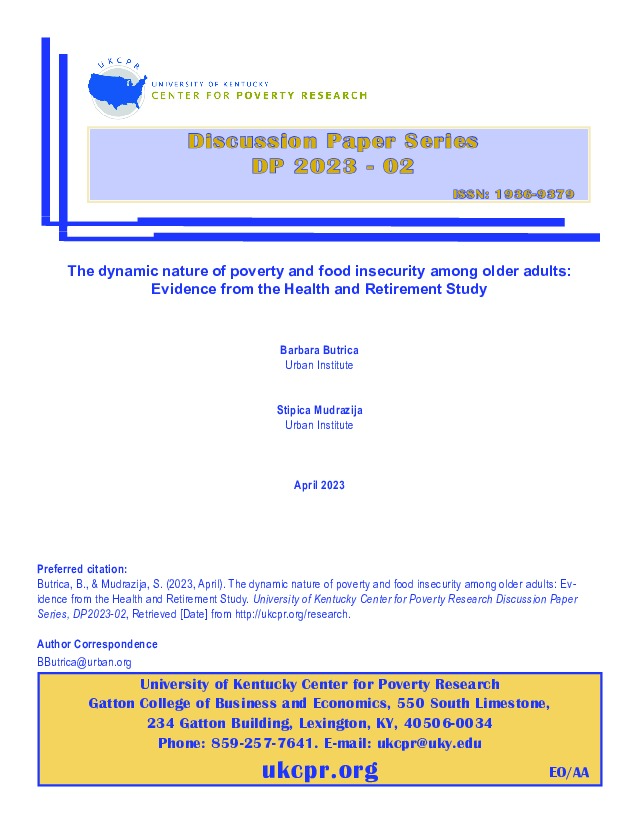This paper examines the dynamic of food insecurity for older adults over the past two decades and how it relates with different poverty measures, including the official poverty measure, Supplemental Poverty Measure, and Supplemental Poverty Measure enhanced with imputed rent. It further examines how age, birth cohort, and the Great Recession shape the relationship of food insecurity and poverty. The analysis uses data from the 2002 through 2018 Health and Retirement Study and assesses the risk of becoming food insecure as a function of various poverty measures across different age groups and birth cohorts before and following the Great Recession. The results show that compared with the official poverty measure, alternative poverty measures are stronger predictors of the onset of food insecurity. Beyond poverty, many factors, including demographic, economic, and health characteristics, also determine food insecurity. Moreover, there is no clear evidence that the impact of poverty on food insecurity declines at advanced ages or that the impact of the Great Recession on the onset of food insecurity has been smaller among the oldest older adults. Instead, more recent cohorts of older adults exhibit a greater discrepancy between food insecurity and poverty.
Research
SeniorsPDF Thumbnail
